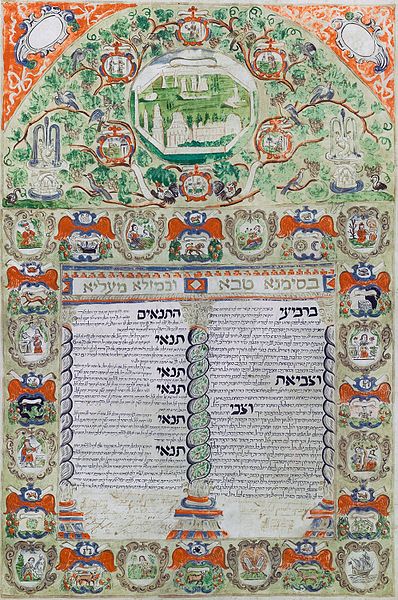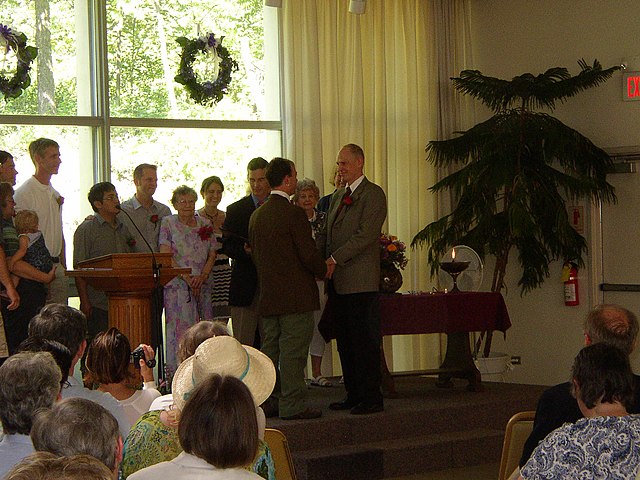A ketubah is a Jewish marriage contract. It is considered an integral part of a traditional Jewish marriage, and outlines the rights and responsibilities of the groom, in relation to the bride. In modern practice, the ketubah has no agreed monetary value, and is seldom enforced by civil courts, except in Israel.
An illuminated ketubah
A modern ketubah
Wedding certificate for Esther Solomon and Benjamin Levy, Wellington, New Zealand, 1 June 1842, witnessed by Alfred Hort and Nathaniel William Levin
Rabbi filling in the final details of a ketubah
Marriage, also called matrimony or wedlock, is a culturally and often legally recognised union between people called spouses. It establishes rights and obligations between them, as well as between them and their children, and between them and their in-laws. It is nearly a cultural universal, but the definition of marriage varies between cultures and religions, and over time. Typically, it is an institution in which interpersonal relationships, usually sexual, are acknowledged or sanctioned. In some cultures, marriage is recommended or considered to be compulsory before pursuing sexual activity. A marriage ceremony is called a wedding, while a private marriage is sometimes called an elopement.
Indian Hindu wedding with the bride and groom in traditional dress.
Chinese immigrant with his three wives and fourteen children, Cairns, 1904
A same-sex couple exchanging wedding vows in a Unitarian Universalist Fellowship
In an 1828 "Wife Wanted" advertisement, an Englishman claiming a "great taste for building" pledges to apply a prospective wife's dowry-like £1000+ to build property that will be "settled on her for life".








